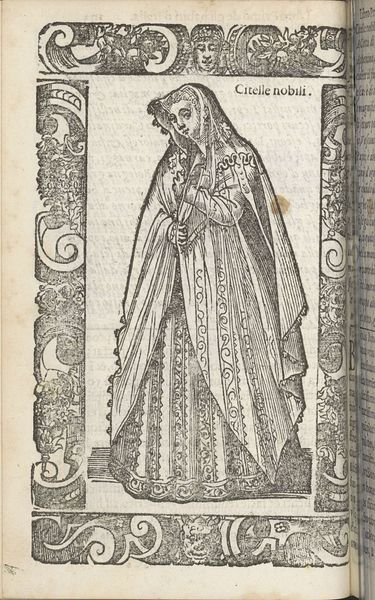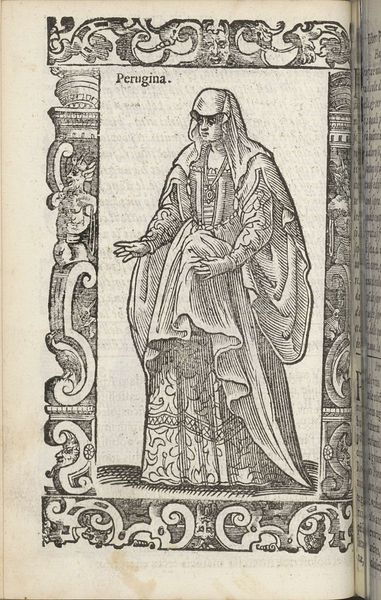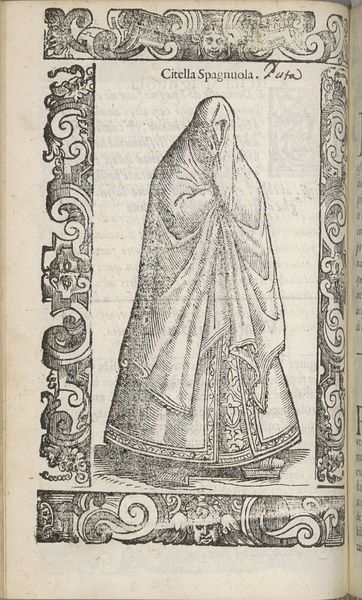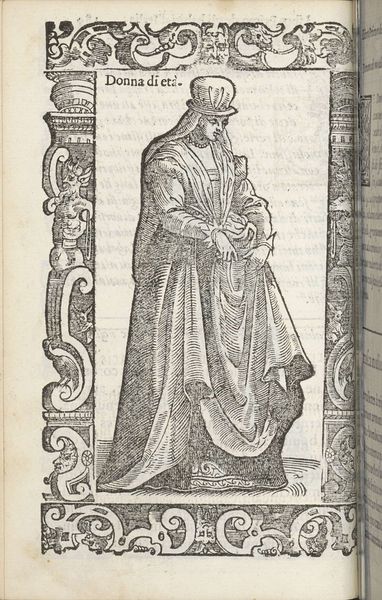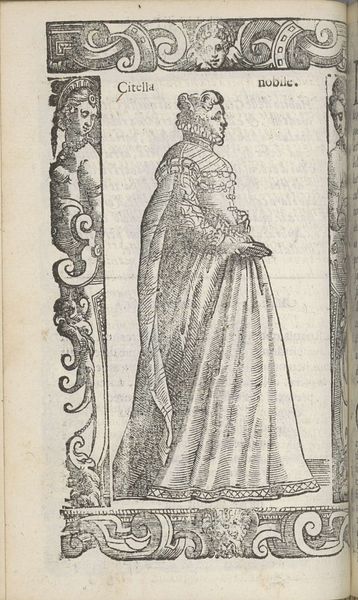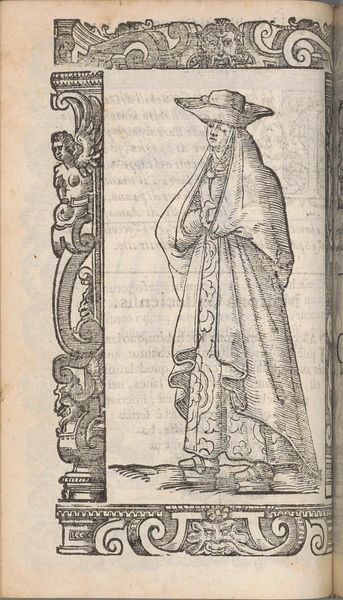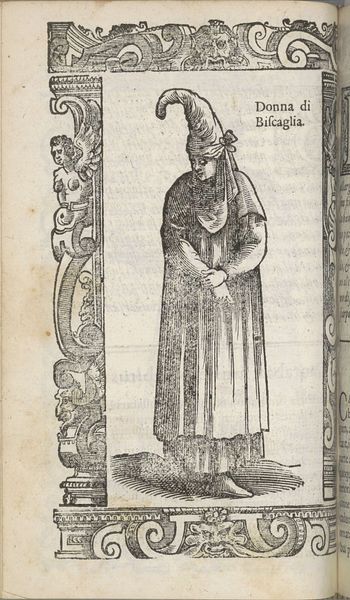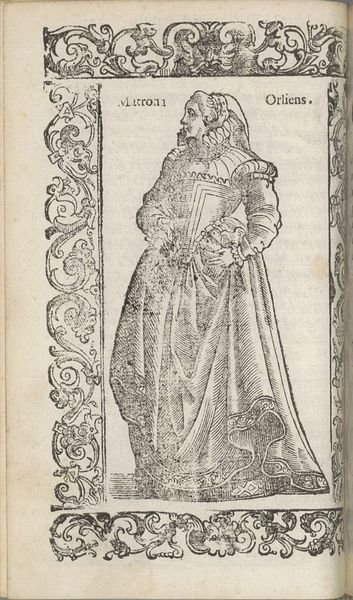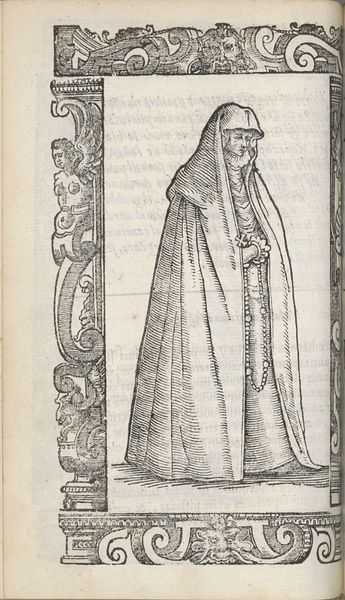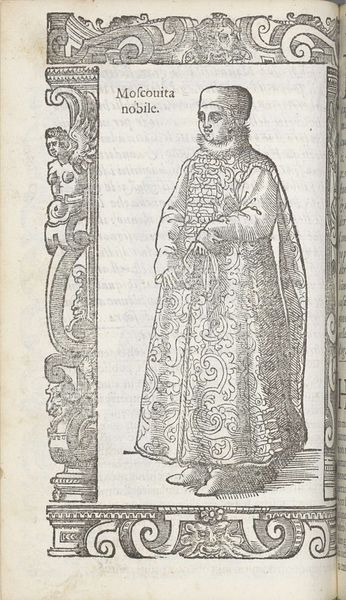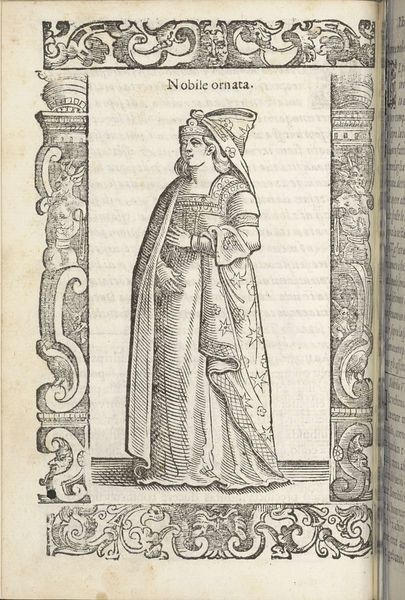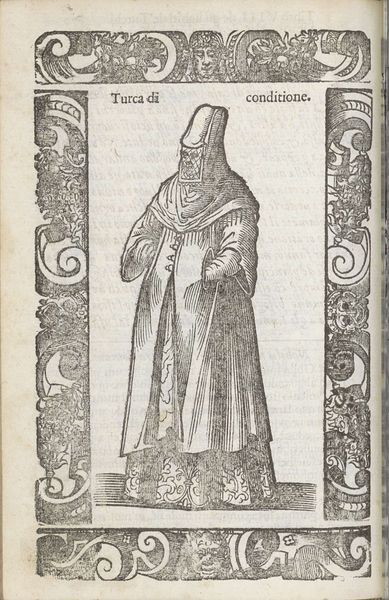
Adellijke dame in eigentijdse (moderne) kleding van het koninkrijk Napels 1598
0:00
0:00
drawing, print, engraving
#
drawing
# print
#
mannerism
#
figuration
#
history-painting
#
dress
#
engraving
Dimensions: height 167 mm, width 125 mm
Copyright: Rijks Museum: Open Domain
Curator: I'm struck by the visual texture in this print—it seems very tactile. What is your first impression? Editor: Yes, the density of lines creates an interesting surface, doesn't it? Well, this is "Adellijke dame in eigentijdse (moderne) kleding van het koninkrijk Napels", a drawing by Christoph Krieger from 1598. It's actually an engraving. Curator: 1598! I wonder, what does 'modern' clothing entail from Krieger's perspective at the time? The clothing certainly speaks to status; every layer and detail conveys wealth and power. Editor: Absolutely. Look closely, you see how the density of the lines helps render fabric? These are indicators of labor value--someone wove that, someone else embroidered it. Then there is the question of what dyestuffs were utilized in producing the fabrics! Curator: And what the garments signify for women of the Neapolitan Kingdom during that period! We can see the dress functioning as a cultural text in itself. The way it constructs and limits female identity. Editor: But it also grants visibility, right? Highlighting its construction, we can see how identity and value were literally sewn together for women in elite circles. We're talking about material conditions *shaping* a particular experience and self-image. Curator: Precisely. This image exists as an assertion of social positioning, but it could also hint at societal restraints of being "a noble lady" in late 16th century Europe. It might have operated as propaganda almost! Editor: Do you think it served primarily as a document? This engraving circulated in print—the image itself is a product, aimed at consumers, presumably as a sort of "fashion plate" or visual report from this place? Curator: Both functions probably operated simultaneously. As a circulating image it surely impacted and even solidified existing stereotypes around the Neapolitan Aristocracy of the era. But how fascinating to ponder about it being regarded fashion forward back then! Editor: Krieger's attention to material, albeit through the filter of engraving, emphasizes a really compelling early form of consumerism and how material status was performed in the Kingdom of Naples. Curator: Reflecting on it, I'm intrigued by the artist using clothing as a vessel for discussing class, gender, and societal norms in 16th-century Naples. It makes me curious to understand what other political or social undertones can be gleaned. Editor: I agree. Thinking about production, circulation, labor and even, consumption, as a central facet of creating the artwork itself grants more clues of how status and power was negotiated at the time.
Comments
No comments
Be the first to comment and join the conversation on the ultimate creative platform.
